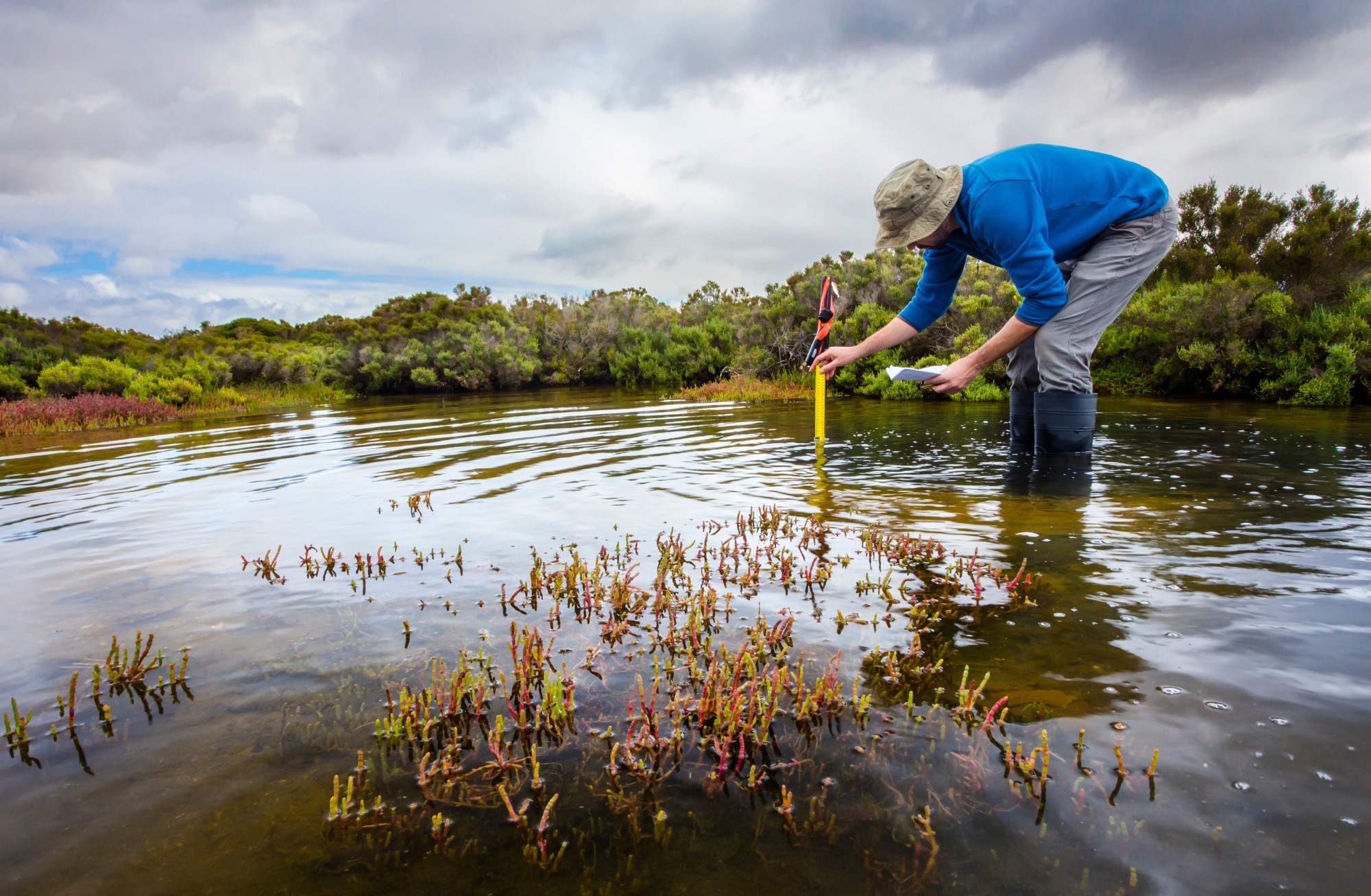Reviewed by Alex SmithJul 28 2022
According to a new study, restoring coastal vegetation — so called “blue carbon” habitats — may not have as positive an impact as it was claimed to have.

Image Credit: Shutterstock.com/ I. Noyan Yilmaz
In their study, scientists from the University of East Anglia (UEA), the French Centre National de la Recherche Scientifique (CNRS), and the OACIS initiative of the Prince Albert II of Monaco Foundation challenge the extensively held view that restoring areas like saltmarsh, seagrass, and mangroves can eliminate huge amounts of carbon dioxide (CO2) from the air.
The findings of their study were recently reported in the journal Frontiers in Climate and outline seven reasons why carbon accounting for coastal ecosystems is not only hard but also risky.
This is due to the high variability in carbon burial rates, susceptibility to future climate change, and fluxes of nitrous oxide and methane. The authors, who also observed information on restoration charges, warn that additional measurements have the potential to decrease these threats. However, this would mean much higher expenses.
But they stress that blue carbon habitats must still be safeguarded and, where possible, restored, as they have advantages for coastal protection, climate adaptation, biodiversity conservation, and food provision.
We have looked into the processes involved in carbon removal and there are just too many uncertainties. The expected climate benefits from blue carbon ecosystem restoration may be achieved, yet it seems more likely they will fall seriously short.
Dr. Phil Williamson, Study Lead Author and Honorary Reader, School of Environmental Sciences, University of East Anglia
Williamson continued, “If you want to have extra carbon removal, you need extra habitat, and the scope for restoration is limited. Many of these sites have been built on, for coastal settlement, tourism and port development.”
“Nevertheless, we believe that every effort should be made to halt, and wherever possible reverse, the worldwide loss of coastal vegetation. That’s because blue carbon habitats are more than carbon stores—they also provide storm protection, support biodiversity and fisheries, and improve water quality,” added Williamson.
The sediments underneath the mangrove forests, seagrass meadows and tidal saltmarshes are rich in organic carbon that has been housed and stored over many hundreds of years.
Several recent studies and reviews have presented two methods in which such coastal blue carbon ecosystems could offer a natural climate solution: by conservation, decreasing the greenhouse gas emissions emerging from the loss and degradation of such habitats, and restoration. This is to increase carbon dioxide drawdown and its long-lasting storage.
This new study concentrates on the latter, evaluating the possibility of obtaining measured and secure carbon removal (negative emissions) via the restoration of coastal vegetation.
Businesses and states have promised to offset their emissions by restoring such ecosystems via carbon credits, assuming reliable knowledge of how much CO2 they will eliminate in the future from the air.
But Dr. Williamson and co-author Prof Jean-Pierre Gattuso of CNRS and the OACIS initiative of the Prince Albert II of Monaco Foundation state the policy issue is more subtle.
That is, removal of CO2 utilizing coastal blue carbon restoration has questionable cost-effectiveness when taken into account only as a climate mitigation action, either for carbon-offsetting or for inclusion in countries’ Nationally Determined Contributions, which sets out their measures to decrease emissions and adapt to the effects of climate change under the Paris Agreement.
If we use these ecosystems for carbon offsets in a major way, expecting that they would remove up to, say, 100 gigatons of carbon dioxide over the period 2025–2100, but find they only remove 10 or maybe just one gigaton of CO2, then climate tipping points could be crossed, with really serious consequences.
Dr. Phil Williamson, Study Lead Author and Honorary Reader, School of Environmental Sciences, University of East Anglia
Williamson added, “If, however, such ecosystems are restored to protect biodiversity, and we find that they also remove several gigatons of CO2, then that would be a bonus, assuming other means are used for climate mitigation.
“Restoration should therefore be in addition to, not as a substitute for, near-total emission reductions. Where coastal blue ecosystems restoration projects are carried out primarily for carbon removal, they need to include comprehensive long-term monitoring to verify that the intended climate benefits are being achieved,” continued Williamson.
Professor Gattuso stated, “Many important issues relating to the measurement of carbon fluxes and storage have yet to be resolved, affecting certification and resulting in potential over-crediting.”
Gattuso added, “The restoration of coastal blue carbon ecosystems is nevertheless highly advantageous for climate adaptation, coastal protection, food provision and biodiversity conservation. Such action can therefore be societally justified in very many circumstances, based on the multiple benefits that such habitats provide at the local level.”
Journal Reference:
Williamson, P & Gattuso, J.-P. (2022) Carbon Removal Using Coastal Blue Carbon Ecosystems Is Uncertain and Unreliable, With Questionable Climatic Cost-Effectiveness. Frontiers in Climate. doi.org/10.3389/fclim.2022.85366.